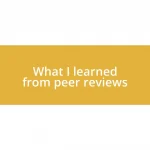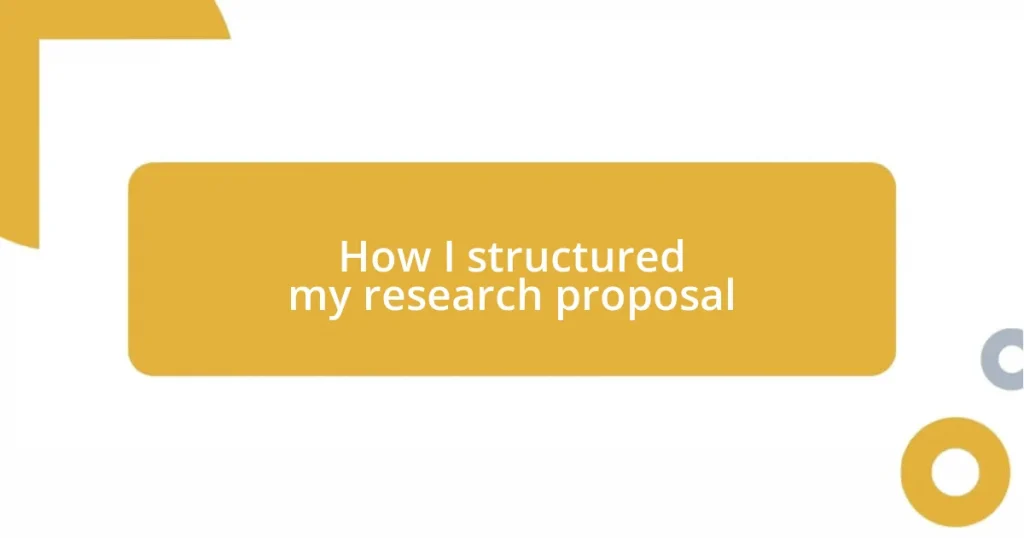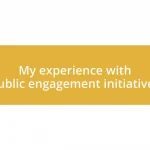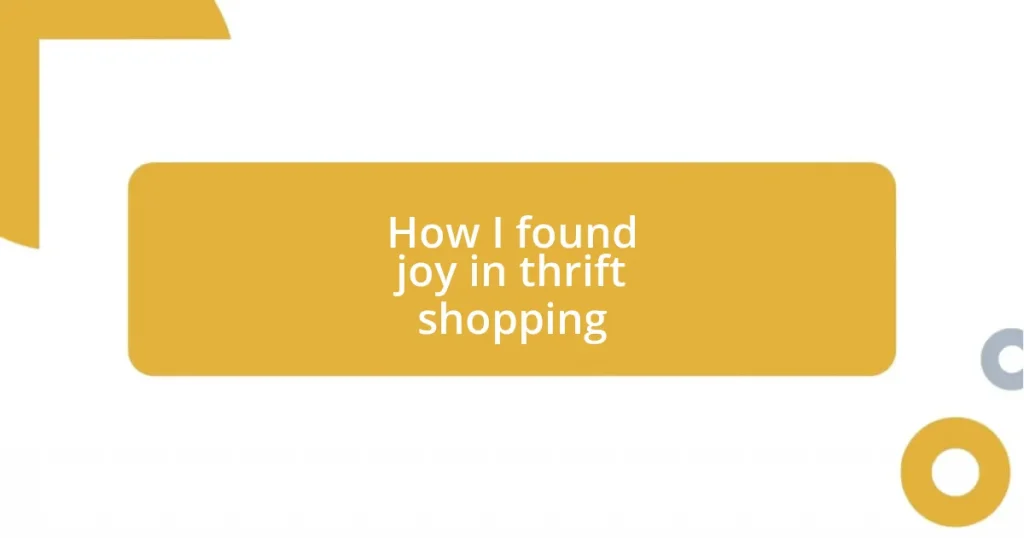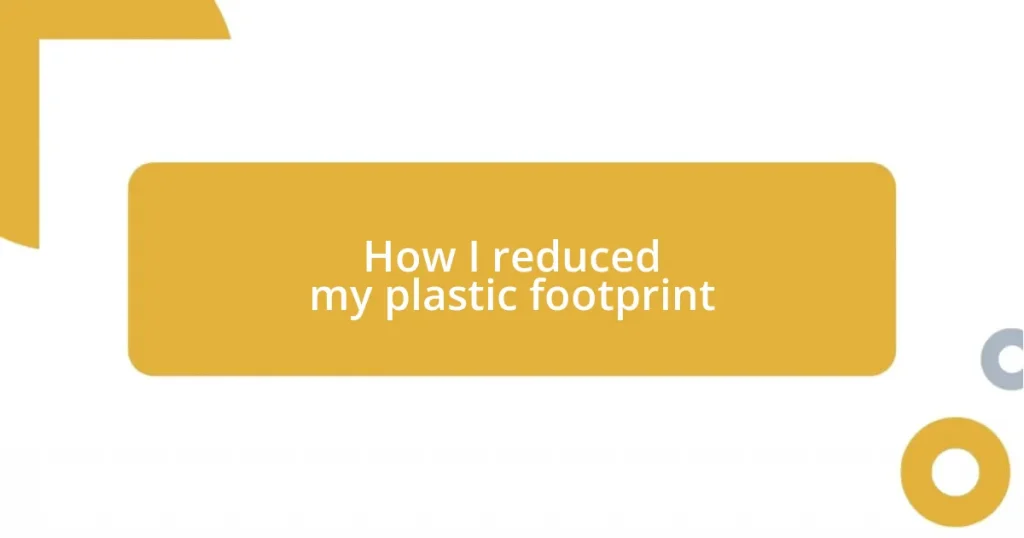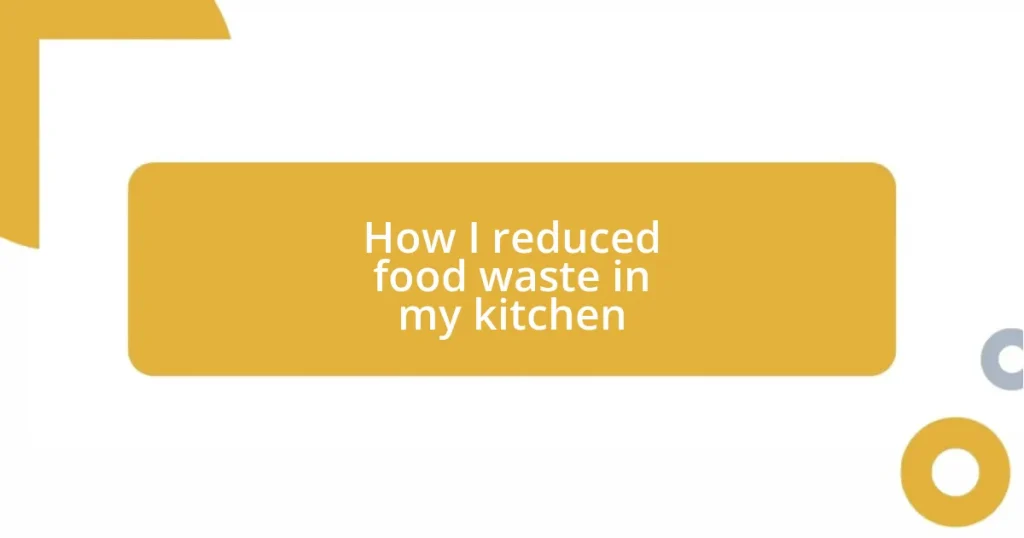Key takeaways:
- Creating a well-structured research proposal serves as a roadmap that clarifies research questions, methodologies, and significance within a broader academic context.
- Iterative refinement of research questions and methodologies enhances clarity, confidence, and the overall quality of the proposal.
- Engaging with peers and mentors during the review process provides valuable feedback, enriching the proposal and ensuring effective communication of ideas.
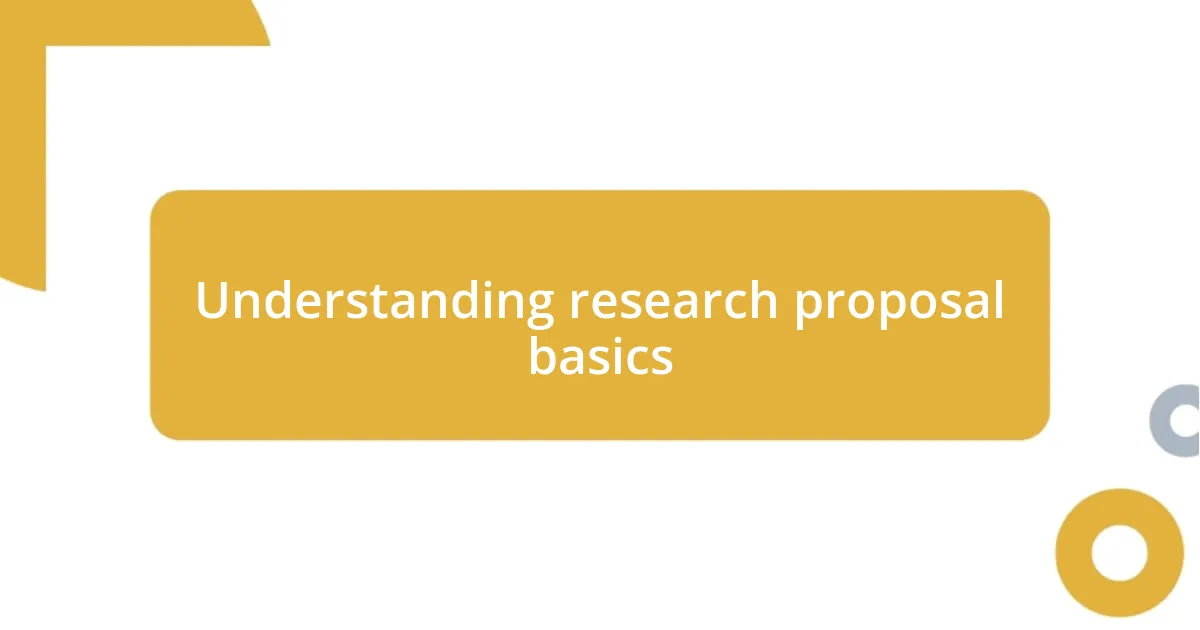
Understanding research proposal basics
When I first tackled my research proposal, I was overwhelmed by its foundational elements. A well-structured proposal isn’t just a formality; it serves as a roadmap, guiding the researcher and the readers through the entire project. Have you ever found yourself questioning how to articulate your research question clearly? It took me several drafts to refine mine, and that process taught me the value of clarity and precision in setting the stage for my study.
Another critical aspect is understanding the significance of your research in the broader academic context. I remember presenting my proposal draft to peers, and their honest feedback opened my eyes to gaps that I hadn’t considered. This exchange not only strengthened my proposal but also highlighted the importance of situating your work within existing literature. Why does your study matter? That’s a question worth grappling with as you draft your proposal.
Finally, let’s talk about methodology. Early on, I had a vague idea of what methods I wanted to use, but it wasn’t until I dove deep into the specifics that everything clicked into place. It’s essential to think critically about the approach you will take; it’s not just about how you’ll collect data, but why those methods align with your research goals. Reflecting on these choices can feel daunting, but I promise, it’s a rewarding process that emphasizes your commitment to rigor in your research.
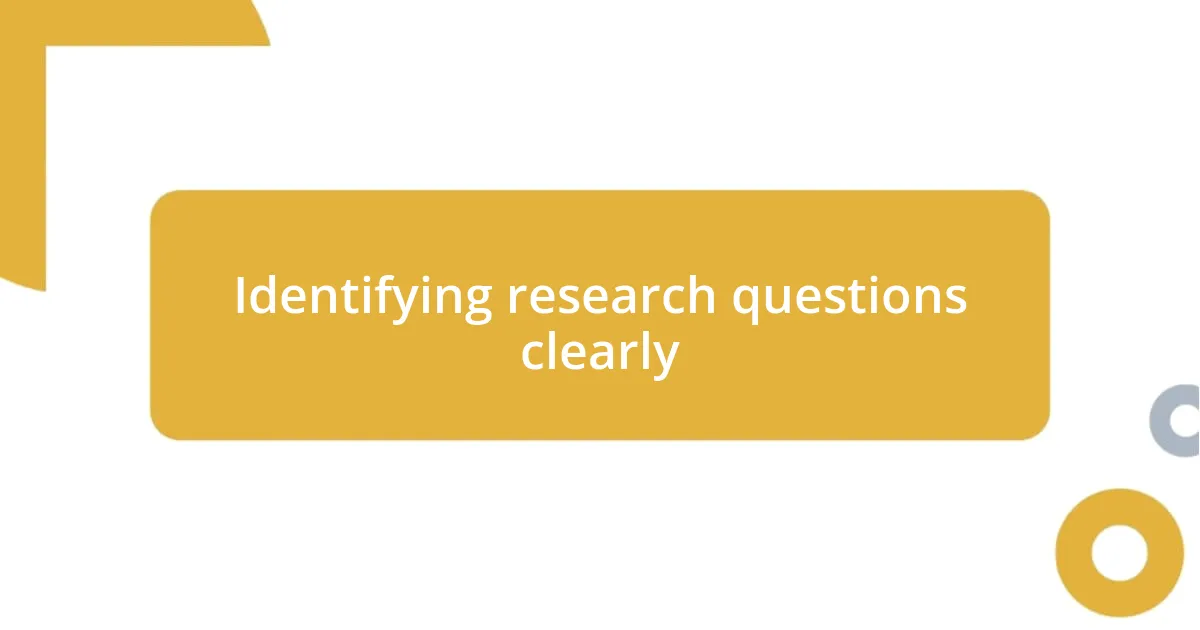
Identifying research questions clearly
Identifying research questions clearly can truly set the tone for your entire project. I vividly recall the moment my advisor pushed me to narrow down my broad ideas into specific, focused questions. At first, it felt constraining, almost like putting a leash on creativity. However, as I refined my questions, I discovered that clarity breeds confidence. A compelling question can ignite passion—it’s what gets you excited to delve into the research process.
I once struggled with the phrasing of my main question, unsure if I was being too vague or too niche. After several back-and-forth discussions, I learned that the key is to ensure your question is both researchable and significant. This realization hit me hard: a well-defined question is like a beacon, illuminating the path for your research. It guides your methodology, informs your literature review, and ultimately determines your findings.
Finding that sweet spot between specificity and depth isn’t easy, but it’s crucial. I frequently revisited my questions, tweaking them to reflect insights I gained from literature and feedback. This iterative process made me appreciate how questions evolve with a researcher’s growing understanding of the field. It’s almost like a conversation; as you learn more, the dialogue with your question deepens, making it a vital part of your research journey.
| Aspect | Definition |
|---|---|
| Specificity | Clarity in the focus of your inquiry, narrowing down a broad topic to a manageable question. |
| Researchability | Ensuring your question can be answered through available methods and data. |
| Significance | Understanding the importance of your question in advancing knowledge within the field. |
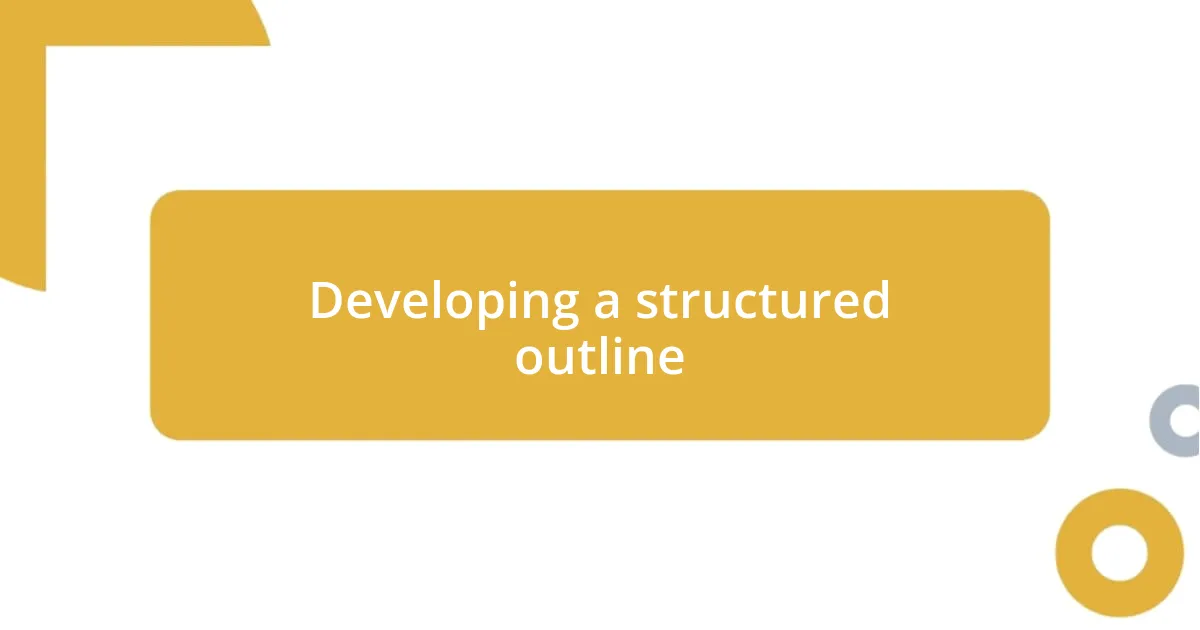
Developing a structured outline
Developing a structured outline
Creating a structured outline was a game changer for my research proposal. I used it as both a skeleton and a map, helping to keep my thoughts organized and focused. While it may have felt tedious at first, I soon realized that each bullet point sparked deeper ideas and connections I hadn’t considered yet.
Here’s how I approached my outline:
- Title and Purpose: Clarity in what my research seeks to achieve.
- Research Questions: A concise list of my main inquiries.
- Literature Review: Key sources and their relevance to my study.
- Methodology: An overview of the methods I planned to employ, including data collection and analysis.
- Expected Outcomes: What I hoped to find or demonstrate through my research.
As I developed my outline, I found that it provided me with a sense of direction and purpose. I remember the sense of relief when I could visualize my project as a coherent narrative. The process of breaking down my ideas into smaller, manageable sections made my research feel less daunting, almost like completing a puzzle. Each piece of the outline was a step toward creating a compelling proposal that conveyed my passion and commitment to the subject.
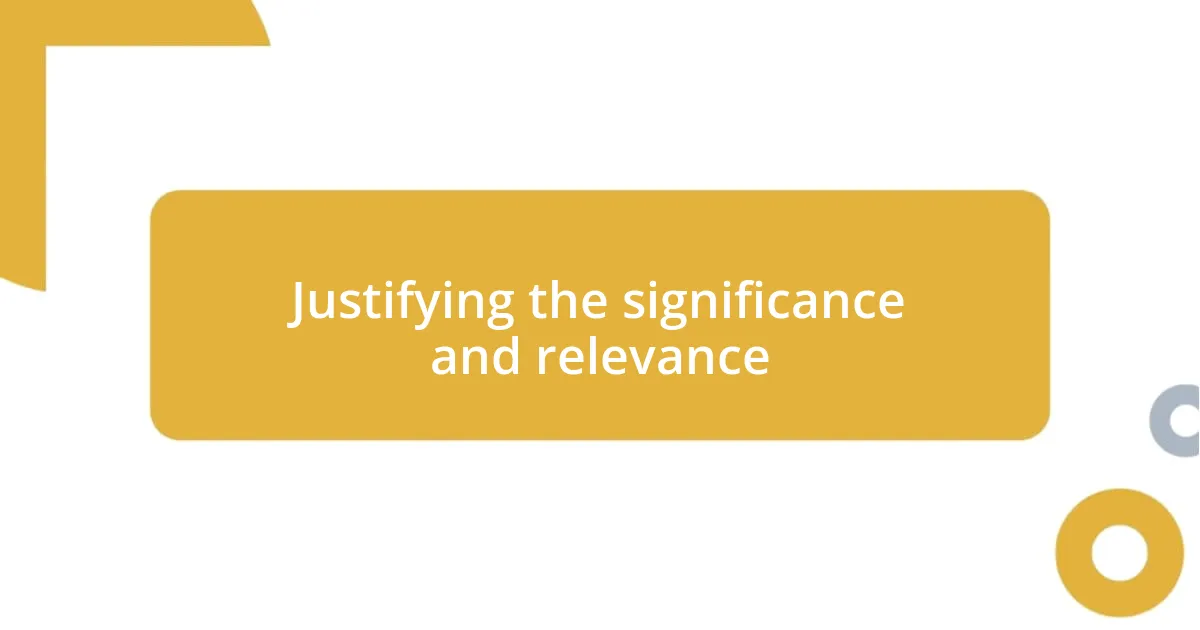
Justifying the significance and relevance
Justifying the significance of my research was a critical step. It’s not just about stating why a question is important; it’s also about connecting it to broader implications. I remember drafting my rationale and thinking, “Why should anyone care about this?” That moment pushed me to articulate how my research could contribute to existing knowledge and potentially empower others in the field.
Through my research journey, I learned that relevance often ties directly to real-world applications. For instance, when I highlighted how my findings could influence policy or spark further studies, it became much easier to justify my work. I’ve found that weaving in practical examples makes the significance of my proposal more relatable and compelling. Reflecting on how my research could affect lives or industries not only solidified its importance but also fueled my motivation.
At times, I wrestled with the daunting task of justifying my work against the backdrop of scientific skepticism. It’s natural to question the value of one’s research, but I embraced this challenge. Acknowledging the gaps in knowledge and demonstrating my unique contribution allowed me to present my proposal with confidence. I realized that articulating the significance isn’t just an exercise in persuasion; it’s about recognizing the potential impact my work could have in the wider academic and societal landscape.
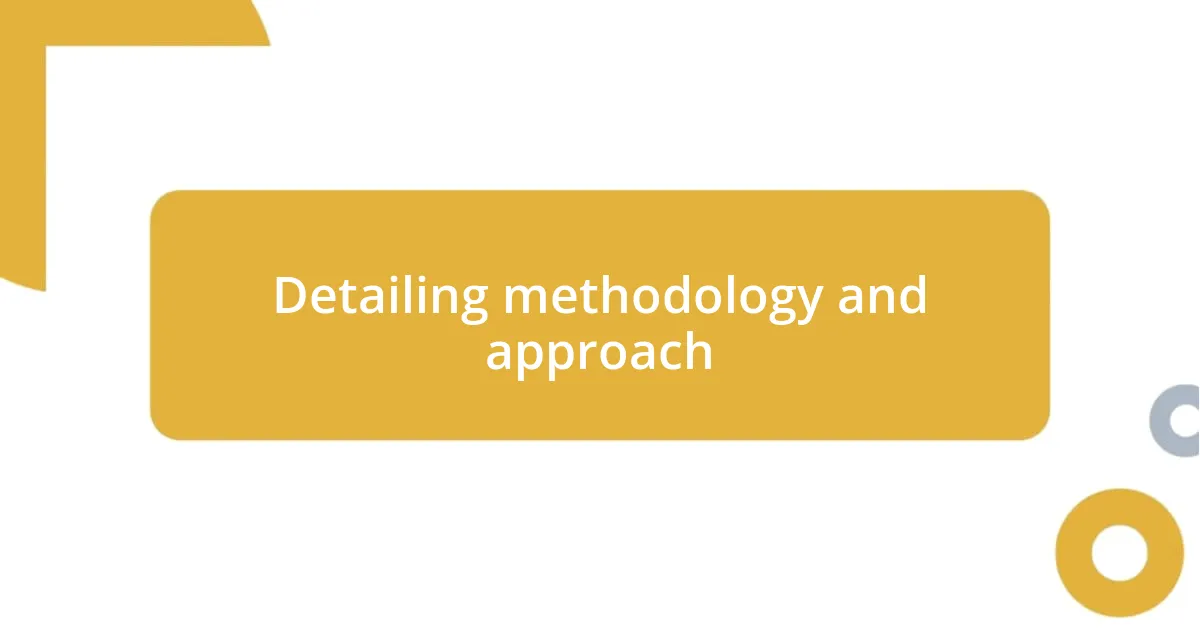
Detailing methodology and approach
Detailing the methodology and approach is where the nuts and bolts of my research came together. I distinctly remember the moment I chosen the qualitative methods to explore my research questions. It felt right, like finding the perfect puzzle piece. My approach included interviews and thematic analysis, allowing me to deeply understand participants’ perspectives. This method not only added richness to my data but also made my research more relatable.
When I drafted this section, I faced some tense moments. Should I stick with traditional methods, or venture into more innovative territory? After reflecting on my objectives, I decided to embrace mixed methods. This allowed me to gather both numerical data and personal narratives. It was exciting to think about how each data type could complement the other, providing a more holistic view of my research topic. I found that asking myself, “What story do I want my data to tell?” helped clarify my approach.
The section on methodology became my favorite part of the proposal. I loved weaving together technical details with personal conviction. I would often think, “Why would anyone care about this method?” It was crucial to show that my chosen methodology had the potential to uncover insights that could spark broader conversations. My excitement was palpable as I articulated how each method aligned with my research goals, contributing to a richer understanding of the subject. Engaging in this process felt like laying down the foundation for something truly impactful.
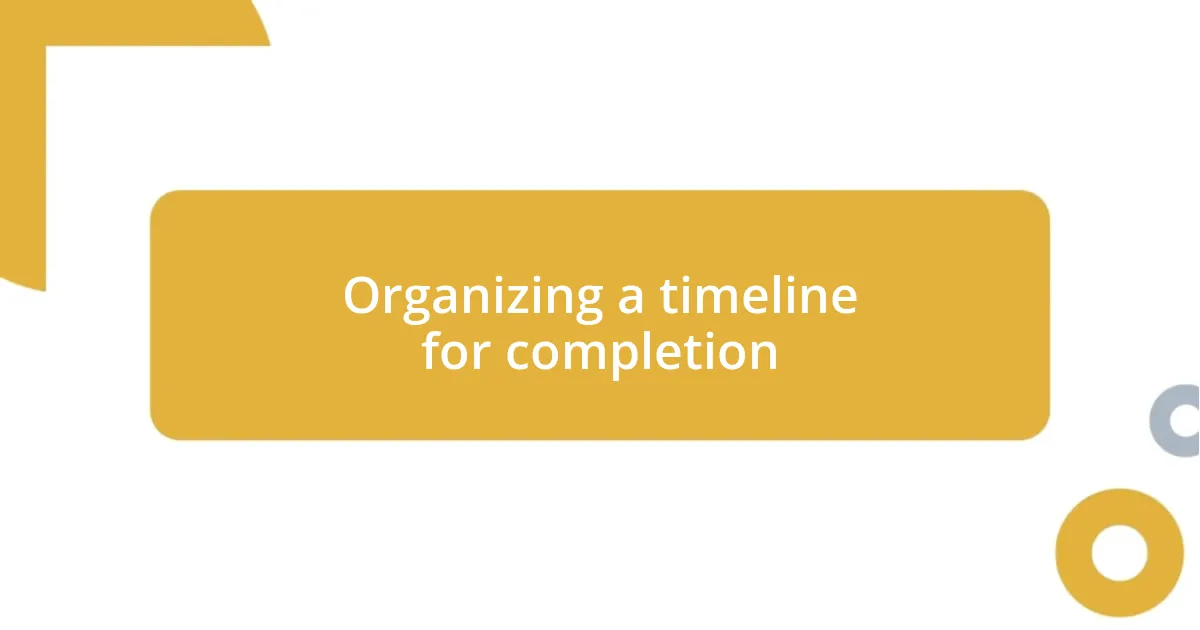
Organizing a timeline for completion
Creating a timeline for my research proposal was like setting a roadmap for a journey. Initially, I felt overwhelmed, staring at the blank page, unsure of where to begin. But I found that breaking my project into phases helped immensely. By outlining key milestones—literature review, data collection, analysis—I was able to visualize my path. It was reassuring to set realistic deadlines. I asked myself, “What can I realistically achieve in this timeframe?” This question guided me to create a plan that felt both ambitious and attainable.
As I structured my timeline, I learned to build in some wiggle room for unexpected challenges. Life happens, and adjustments are part of the process. I recall a moment when I had to pause data collection due to unforeseen circumstances. Instead of panicking, I embraced the delay as an opportunity to refine my research questions further. This adaptability became an essential lesson—maintaining flexibility while keeping a clear focus on my objectives made all the difference.
I also discovered how valuable it was to regularly review my progress against the timeline. Setting aside time to reflect on what I had accomplished kept me motivated. I often asked, “Am I on track to meet my milestones?” This self-checking approach not only helped maintain momentum but also allowed me to celebrate small victories along the way. At the end of the journey, when I finally submitted my proposal, I realized that that well-organized timeline had been my guiding light, transforming a daunting task into a series of manageable steps.
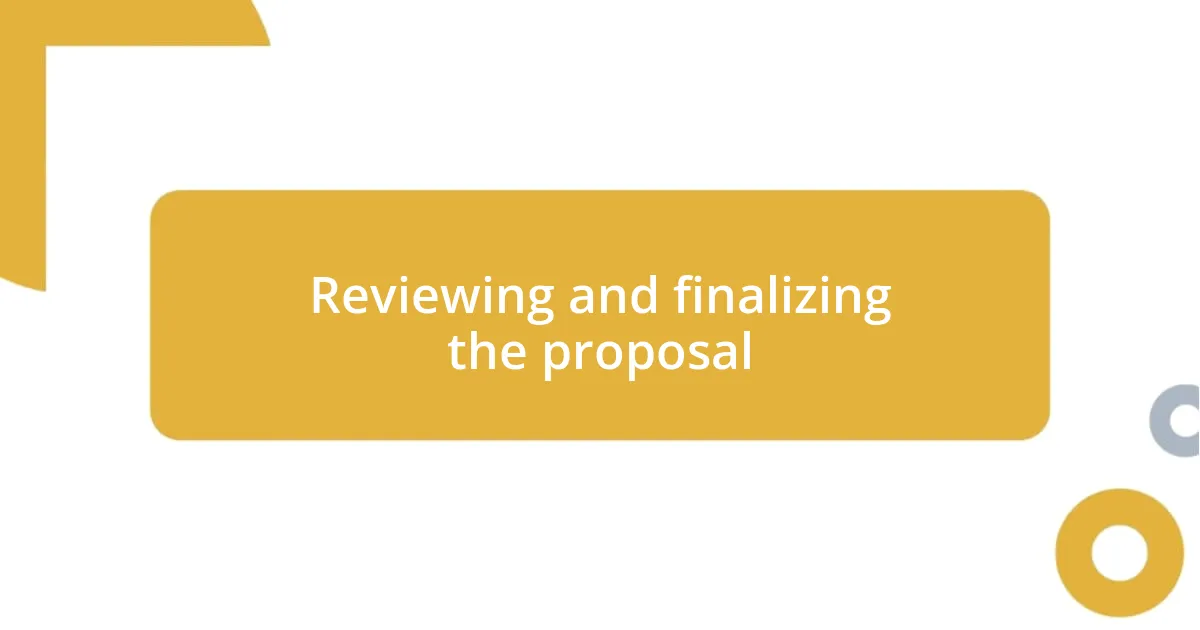
Reviewing and finalizing the proposal
After completing my draft, my focus shifted to reviewing and finalizing the proposal. I distinctly recall sitting in a cozy corner of my favorite café, pouring over the document. As I read through each section, I found myself asking, “Does this clearly communicate my vision?” It was a moment of both excitement and anxiety; I wanted my passion to shine through while ensuring clarity and coherence.
I engaged peers and mentors in this final review process. I can’t stress how valuable their feedback was! One particular instance stood out—my mentor pointed out a section where my enthusiasm might have overshadowed the clarity of my arguments. Realizing I needed to balance both, I took a step back and restructured that part, aiming for a tone that invited the reader in rather than overwhelming them. This collaborative effort not only enriched the proposal but made it more robust and focused.
When I finally hit that “submit” button, a wave of relief washed over me. I had invested time to refine my words, ensuring they accurately represented my research aspirations. I remember thinking, “Have I achieved what I set out to do?” The answer was a resounding yes, bolstered by the confidence that my proposal was a true reflection of my dedication and hard work.







